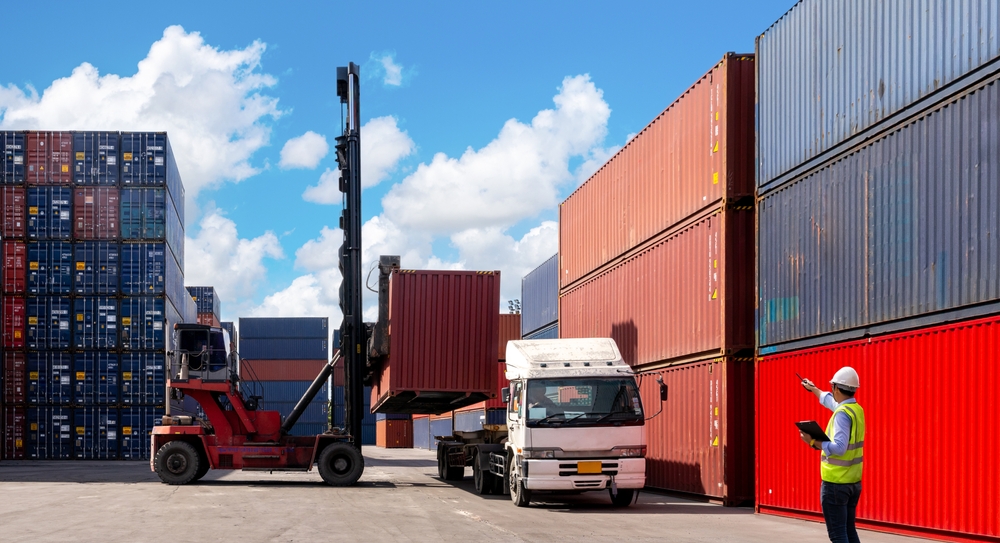The latest buzz in the economic sphere involves the controversial tariffs imposed by former President Trump on food and agriculture. While tariffs often sound like dry economic jargon, they have a tangible impact on our daily lives, particularly concerning what we eat and how much we pay for it. These new tariffs are set to ripple through the economy in ways that are sure to be felt in your grocery bills and dinner plates. Let’s dive into how these tariffs might affect you and your culinary experiences.
1. Higher Grocery Bills for Everyone

With the new tariffs in place, you can expect a noticeable uptick in your grocery bills. These tariffs are essentially taxes on imported goods, and when importers have to pay more, they pass those costs on to consumers. According to a recent report from the U.S. Department of Agriculture, prices for staples like fruits, vegetables, and meats are likely to increase. This means that a simple trip to the grocery store could become a much more expensive errand. Whether you’re shopping at a local boutique market or a big chain store, the impact will be felt across the board.
Beyond just the cost, the availability of some foods could also be affected. Importers might look to cut costs by reducing the amount they bring in, which means certain fruits and veggies might be harder to find. Additionally, domestic producers might not be able to ramp up production quickly enough to fill the gap, leading to shortages. This could turn your favorite recipe into a scavenger hunt for ingredients.
2. Souring the Global Supply Chain

The global supply chain is intricate, with many moving parts, and tariffs can throw a wrench into this finely-tuned machine. When tariffs are imposed, they disrupt the established trade routes and relationships that have been built over years. This can lead to delays and inefficiencies in getting food products from one part of the world to another. According to State Street, such disruptions often lead to increased costs and reduced efficiency.
In a more interconnected world, a hiccup in one region can have ripple effects worldwide. If tariffs make it less viable for countries to export to the U.S., they may seek other markets, which can lead to shortages here. Conversely, countries facing tariffs may retaliate, creating a tit-for-tat trade war that leaves consumers with fewer choices and higher prices. It’s a complex web, but the end result is clear: your wallet takes a hit.
3. Fewer Choices on Store Shelves

Imagine walking into your local supermarket and noticing the once abundant array of produce has been reduced to a few lonely options. With tariffs making it more expensive to import certain goods, variety could be one of the first casualties. Retailers may choose to stock only the most cost-effective options, leaving consumers with fewer choices. For the adventurous cook or the health-conscious shopper, this could be particularly frustrating.
For those who enjoy international delicacies, this could be even more disappointing. Foods that rely on imported ingredients may disappear from shelves entirely. According to NPR, certain specialty items could become rare commodities, reserved for niche markets and high-end retailers. This narrowing of selection could change how we experience food, making it more challenging to find those unique flavors and ingredients we’ve come to love.
4. Impact on Local Farmers

While tariffs are primarily aimed at foreign goods, they can significantly affect local farmers, too. When import prices go up, domestic products may seem more appealing, but it’s not always a cakewalk for local agriculture. Farmers face their own set of challenges, such as potential surpluses if export opportunities dry up because of retaliatory tariffs from other countries. This could lead to a glut in the market, driving prices down for them but not necessarily at the consumer level.
Furthermore, the equipment and supplies farmers use often come from overseas. If tariffs make these essentials more expensive, farmers’ production costs rise. Eventually, these costs trickle down to consumers, affecting the price of domestically produced food items. It’s a delicate balance, and tariffs can upset it, leading to unintended consequences even for local economies.
5. Restaurant Menu Changes

Your favorite restaurant might also feel the heat from these tariffs, and this could result in noticeable changes in their menus. Restaurants rely on a wide array of ingredients, many of which are imported. If these ingredients become more expensive due to tariffs, restaurants may have to adjust their menu offerings or increase prices. This can mean fewer exotic dishes and more local, affordable options — potentially at the expense of creativity and variety.
Additionally, if certain foods become scarce or too expensive, restaurants may have to cut them from their menus altogether. This can be particularly tough for eateries that specialize in international cuisine. Those craving a taste of the Mediterranean or a spicy kick from Southeast Asia might find their options limited. The dining experience could shift towards more domestic flavors, altering our culinary landscape.
6. Effect on Nutrition and Health

Tariffs can indirectly impact the nutritional quality of our diets. As prices for healthy foods like fruits, vegetables, and lean proteins go up, budget-conscious consumers might opt for cheaper, processed alternatives. This shift could lead to an increase in the consumption of high-calorie, low-nutrient foods, negatively affecting public health. The convenience of grabbing a quick, unhealthy snack is sometimes hard to resist when financial constraints are at play.
In the long term, this could have significant implications for national health statistics, potentially exacerbating issues like obesity and diabetes. Access to affordable, nutritious food is a cornerstone of public health, and tariffs can undermine this access. Efforts to promote healthy eating might face additional challenges if economic barriers make it harder for people to afford healthier options. It’s a scenario where economics and health intersect, with serious consequences.
7. Strain on Small Businesses

Small businesses in the food sector, such as specialty stores and local restaurants, are particularly vulnerable to the effects of tariffs. Unlike large corporations, they often lack the financial buffer to absorb increased costs. This can lead to a tough choice: raise prices, reduce offerings, or in some cases, close up shop altogether. For neighborhoods that rely on these small businesses, this can mean a loss of community flavor and diversity.
Moreover, many small businesses pride themselves on offering unique, imported goods that can be hard to find elsewhere. If tariffs make these products too expensive or difficult to source, it diminishes their competitive edge. This could lead to a homogenization of available options, with only the most resilient businesses surviving the economic storm. A hit to small businesses is a hit to local economies, impacting jobs and community cohesion.
8. Complications for Food Assistance Programs

Food assistance programs, which are vital for millions of Americans, could also be affected by these tariffs. These programs often rely on buying large quantities of food to distribute to those in need. As food prices increase, their purchasing power diminishes, meaning they can help fewer people. This is particularly concerning for low-income families who depend on these programs for their basic nutritional needs.
Tariffs could also lead to changes in the types of food these programs can afford to offer. Instead of fresh produce and other healthy options, there might be a shift towards cheaper, less nutritious foods. This can have long-term impacts on the health and well-being of program recipients. Ensuring that food assistance programs remain effective amidst changing economic conditions is crucial for supporting vulnerable populations.
9. Food Industry Job Losses

The food industry, encompassing everything from farming and production to retail and restaurants, employs millions of people. Tariffs can lead to job losses in this sector as businesses struggle to cope with increased costs. If companies need to reduce expenses, workforce cuts are often one of the first steps. This not only impacts those who lose their jobs but also stresses the wider economy, as unemployment rises.
Moreover, job losses in the food industry can have a cascading effect on related sectors, such as transportation and logistics. When fewer goods are being produced or sold, there’s less need for the workers who move these products. This interconnectedness means that tariffs can have widespread implications far beyond their immediate targets. Ensuring economic stability in the face of such challenges is a complex task, with many moving parts to consider.
10. Altered Culinary Traditions

Food is not just sustenance; it’s a fundamental part of culture and tradition. Tariffs that affect the availability and price of certain foods can lead to shifts in culinary traditions. Families might find it harder to access the traditional ingredients they need for cultural dishes, leading to adaptations or even the loss of certain food practices. This can impact cultural heritage, as food is often a way to connect with one’s roots and preserve history.
In a broader sense, altered access to diverse foods can impact how future generations perceive and engage with different cultures. Cuisine is a gateway to understanding others, and its evolution due to economic constraints can shape cultural perceptions. Maintaining culinary diversity amidst changing economic landscapes is important for cultural enrichment and mutual understanding. Tariffs might seem like an economic tool, but their reach extends deep into the cultural fabric of society.
This article is for informational purposes only and should not be construed as financial advice. Consult a financial professional before making investment or other financial decisions. The author and publisher make no warranties of any kind.








